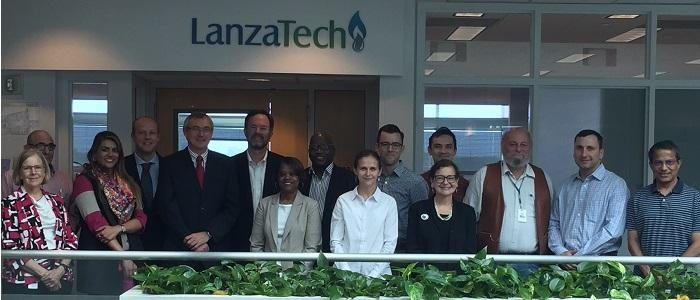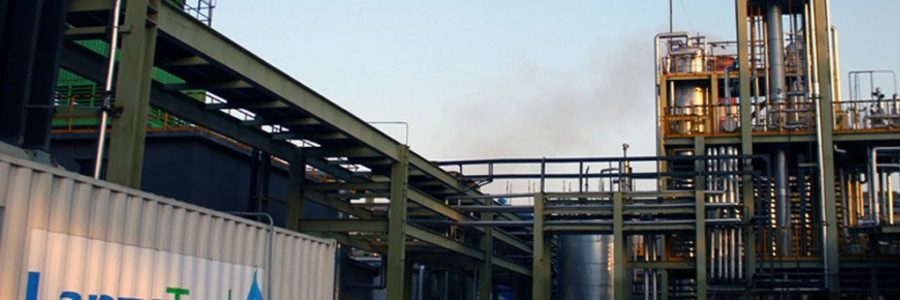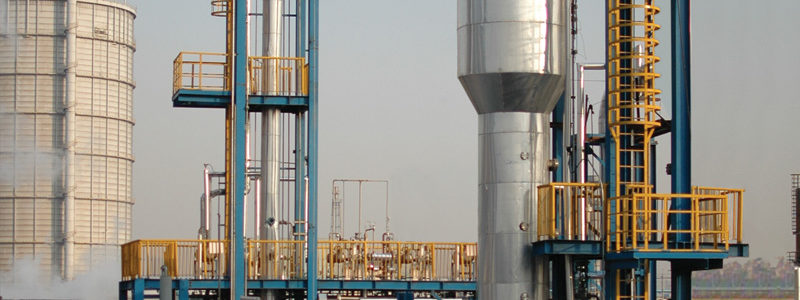South African engineering company Swayana has signed a Memorandum of Understanding (MoU) with LanzaTech to collaborate on developing projects for the production of ethanol and higher value products from waste gases in the ferroalloy and titania smelting sectors.
LanzaTech’s first commercial facility will be online at the end of 2017 in China, producing fuel-grade ethanol from captured steelmaking off-gas. The successful application of LanzaTech’s innovative platform in steel making has led to commercial engagement with companies in the ferroalloy sector.
Ferroalloys are alloys of iron with some element other than carbon; the ferroalloy “carries” that element into molten metal—e.g., during steel manufacturing. Ferroalloys thus serve important functions during iron and steel production. The principal ferroalloys are those of chromium (used for corrosion resistance in stainless steel); manganese (used to counteract the harmful effects of sulfur in the production of steel and cast iron); and silicon (used for deoxidation in steel and as an alloying agent in cast iron).
Boron, cobalt, columbium, copper, molybdenum, nickel, phosphorus, titanium, tungsten, vanadium, zirconium, and the rare earths impart specific characteristics and are usually added as ferroalloys.
Ferroalloys are usually produced by the reduction of a metallic ore (usually an oxide) by carbon. Depending on the alloying element, the grade and other economic/technological considerations, the details of the production processes can vary widely. In all cases, however, the production of ferroalloys is energy-intensive.
In a 2007 paper presented at the XI International Conference on Innovations in the Ferro Alloy Industry (Infacon XI), a team from the US EPA, the Norwegian Pollution Control Authority (SFT), and SINTEF Materials and Chemistry (Lindstad et al.) noted that:
Ferroalloys are most commonly produced by electric submerged arc furnaces with graphite electrodes or consumable Søderberg electrodes. Some ferroalloys, and especially ferromanganese, are also produced in blast furnaces. In addition to emissions originating from reducing agents and electrodes, the calcination of carbonates in ores and fluxes such as limestone or dolomite, contribute to the emission of CO2. Primary emissions in covered arc furnaces consist almost entirely of CO, due to the strong reducing environment. This CO is either utilized for energy production in boilers, or it is flared. The energy produced is assumed to be used internally at the site and the carbon content of the CO subsequently converted to CO2 in-plant. The CO gas produced in open or semi-closed furnaces is burnt to CO2 above the charge level. Any CO emitted to the atmosphere is assumed to be converted to CO2 within days afterwards.
The possible impact of using off-gases from this sector is considerable. South Africa has the potential to produce more than 400,000 tonnes of ethanol per year from existing ferroalloy and titania producers. This would prevent the release of more than 700,000 tonnes of CO2 per annum—the equivalent to removing 250,000 cars from South Africa’s roads.
In this collaboration, a first commercial ethanol production facility is in the pre-feasibility (PFS) phase and it is based on off-gases from an existing smelter site in the Mpumalanga province of South Africa.
As part of the process development of this plant, a pilot unit was shipped to South Africa, and successful fermentation tests have been conducted with the smelter off-gas, supporting the PFS design.
The air quality of the industrial areas of Mpumalanga is under substantial environmental pressure, and this plant will contribute to the green- and sustainability drives in the area by reducing the carbon footprint, contributing to cleaner air, generating jobs, and developing a new industry based on ethanol and its chemical derivatives.
The Department of Trade and Industry of South Africa (dti) is working with Swayana to realize the implementation of the project. Swayana has applied for a Black Industrialist Programme and the application is in progress. InvestSA, a division of the dti, is assisting in facilitating the project both in the USA and in SA.
South Africa currently supplies a large percentage of the worldwide demand in ferroalloys and titania slag and is an ideal place for LanzaTech’s carbon capture technology and this first facility will open up the market for a green based chemicals technology based on one of SA strengths, namely mining and beneficiation of minerals.
—Joseph Zinyana of Swayana
LanzaTech’s gas fermentation technology uses carbon-containing gases as both a nutrient and energy source for micro-organisms that, in turn, produce fuels and chemicals.
In the LanzaTech process, a carbon monoxide (CO) gas source, is introduced into a bioreactor vessel. Fermentation proceeds in a liquid medium where the microbes grow and produce specific products. These naturally occurring microbes are entirely contained in the bioreactor and have no direct interaction with the outside environment.
As the reaction proceeds the end-products are recovered and separated from the water, which can be returned to the bioreactor, and prepared for their intended downstream markets. The products that come from this process are quite diverse and depend on the specific microbes.
Swayana was established in 2016 and is a South African registered, Level 2 BBBEE company utilizing carbon footprint reducing technologies—one of which is ethanol from industrial CO containing off-gases, using the LanzaTech microbial fermentation technology. The ethanol will be sold as a green fuel into the global market initially, but with larger production volumes anticipated it can be used as feedstock to the chemical industry, specifically for ethylene and polyethylene production.
Resources
Original press release can be viewed here



